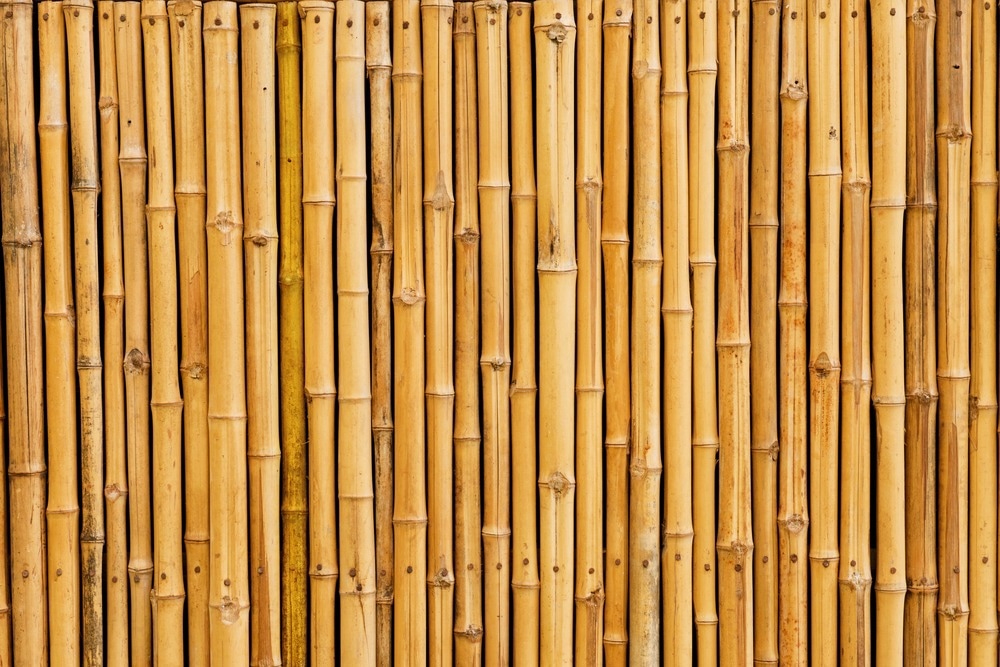Optically transparent bamboo has received some research focus recently, with a new paper by Chinese researchers now published in the journal Polymers focusing on the preparation, applications, and properties of this intriguing material.

Study: Optically Transparent Bamboo: Preparation, Properties, and Applications. Image Credit: somchaiP/Shutterstock.com
The Need for Innovative, Sustainable Materials
Modern industrialized society has brought many benefits to humankind, but progress has come at a cost. Energy consumption, emissions, the exploitation of finite resources, and environmental pollution all cause massive issues in terms of environmental harm and associated societal and economic problems.
Recognizing the scale of the issues that accelerating industrialization and urbanization have caused, scientists have focused on the manufacture and study of sustainable, alternative materials for numerous industrial and commercial applications.
Using Biomass-Derived Materials to Replace Conventional Materials
Sectors such as construction have been undergoing a revolution in recent years due to research into alternative sustainable materials. Biomass-derived materials offer several benefits to the industry in terms of ecological friendliness, cost, and comparable mechanical properties to conventional building materials.
Various structural and functional elements of buildings are constructed of materials like concrete, which is responsible for significant carbon emissions. Partial or complete replacement of conventional building materials with cheap, renewable biomass-derived materials can significantly reduce this environmental burden, helping to realize a truly sustainable future for the construction industry.
In recent years, transparent wood has emerged as a potential material for structural applications. Prepared by extracting lignin from wood and combining it with resin, this material has several benefits, including transparency, high strength, excellent mechanical properties, and superior thermal insulation capabilities. Transparent organic resins such as epoxy polymers are typically used in transparent wood-based materials.
The optical transmittance of transparent woods is superior over a wide range of wavelengths. Moreover, it possesses the characteristics of native wood, such as high strength, toughness, low density, and a high modulus. Transparency depends on the structure and composition of the wood used in its manufacture.
Other industries can take advantage of sustainable, transparent biomass-derived materials. The possibilities for numerous sectors make this research field a cutting-edge, innovative one.
![A selection of structural modification strategies to improve TB functionality (inspired by Burgert et al. [62]).](https://www.azom.com/images/news/ImageForNews_59774_16606409266675582.png)
A selection of structural modification strategies to improve TB functionality. Image Credit: Li, X et al., Polymers
Optically Transparent Bamboo
Bamboo possesses enormous potential as an alternative, sustainable material. One of the main advantages of bamboo over trees is its faster growth cycle of between three and five years, compared to the twenty to sixty years growing trees require. Therefore, this enhances its renewability and sustainability, with higher yields in a much shorter timeframe.
Other benefits of bamboo include its higher average tensile strength than wood and other natural fibers such as cotton. Research has indicated that bamboo possesses higher mechanical properties than wood and excellent biodegradability. Due to these multiple advantageous properties, bamboo has been used to manufacture several composite materials, such as laminated bamboo lumber.
Due to its similarities with wood, bamboo has the potential to be used in optically transparent composites. However, some challenges exist with this abundant biomass-derived material. For instance, its high density reduces permeability during composite treatment methods, and its low porosity causes issues.
Permeability issues also increase the quantity of chemicals and the timescale required to remove lignin from bamboo. Furthermore, it can cause problems with resin filling, which limits the transparency, optical transmittance, and mechanical properties of composites. Whilst challenges exist, the field of optically transparent bamboo is a promising one.
The Study
Due to the promising nature of optically transparent bamboo, the authors have prepared a review of current research advances in the production of this material. In doing so, the paper provides perspectives on future research directions.
Several facile and efficient strategies have been explored in the research. Lignin modification, delignification, and methods for impregnating composites with resin have been discussed. Additionally, the mechanical and optical properties of transparent bamboo composites prepared by different methods have been highlighted. Various applications such as energy-efficient buildings and optoelectronic devices are examined.
Several important conclusions have been drawn by the authors. Resin selection is crucial for realizing the optimal properties of transparent bamboo composites. This is an opportunity for future research. Additionally, green chemical synthesis methods can help to improve the sustainability of processes and limit the use of harsh reagents and other chemicals during the preparation process.

Design of a future integrated application of TB. Image Credit: Li, X et al., Polymers
The scalability of transparent bamboo is currently challenging, but some strategies have been explored in recent research to improve this. Technical optimization methods will be advantageous for overcoming various challenges with the materials.
Potential uses of transparent bamboo include thermal insulation, conductive materials, and decorative materials. Functionalization of the material opens up possibilities in the fields of optoelectronic devices and energy-saving windows, amongst other innovative applications. The potential for the field of sustainable development is vast.
Further Reading
Li, X et al. (2022) Optically Transparent Bamboo: Preparation, Properties, and Applications Polymers 14(16) 3234 [online] mdpi.com. Available at: https://www.mdpi.com/2073-4360/14/16/3234
Disclaimer: The views expressed here are those of the author expressed in their private capacity and do not necessarily represent the views of AZoM.com Limited T/A AZoNetwork the owner and operator of this website. This disclaimer forms part of the Terms and conditions of use of this website.